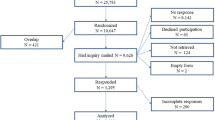Abstract
20 years ago, the Report of the Commission on Research Integrity (also known as the Ryan Commission after its chair) was submitted to the Secretary of the Department of Health and Human Services and to House and Senate Committees. As directed in enabling legislation, the Commission had provided recommendations on a new definition of research misconduct, oversight of scientific practices, and development of a regulation to protect whistleblowers. Reflecting the ethos of the time, the Commission recommended that institutions receiving Public Health Service research funding should provide oversight of all but the most egregious misconduct. The suggested definition of research misconduct was organized around misappropriation, interference and misrepresentation, which would have addressed collaborative/authorship disputes and sabotage in scientific laboratories, both of which remain unaddressed in current policy. The Commission also recommended the Whistleblower Bill of Rights and Responsibilities which would have authorized remedies for whistleblowers who experienced retaliation and sanctions against retaliators. Response from the scientific community was highly critical, and none of the Commission’s recommendations was accepted. No new body has examined issues within the Commission’s charge, there has been no significant Congressional or public pressure to do so, institutions have not been able to sustain standards that would have avoided current concerns about bias and irreproducibility in research, and there is still no entity in science capable of addressing issues assigned to the Commission and other urgent issues.
Similar content being viewed by others
References
Alberts, B., et al. (2015). Self-correction in science at work. Science, 348(6242), 1420–1422.
Bailar, J. (1995). The real threats to the integrity of science. The Chronicle of Higher Education, 41(32), B1–3.
Code of Federal Regulations 42 CFR Part 93.103 2005.
Committee on Science, Engineering and Public Policy of the National Academy of Sciences, National Academy of Engineering, and Institute of Medicine. (forthcoming). The integrity of science. http://www8.nationalacademies.org/cp/projectview.aspx?key=49387. Accessed 12/18/15.
Devine, T. (1995). To ensure accountability, a whistleblowers’ bill of rights. The Scientist, 9(10), 11–12.
Enserink, M. (2014). Sabotaged scientist sues Yale and her lab chief. Science, 343, 1065–1066.
Ethics Resource Center (2012). Retaliation: When whistleblowers become victims. http://www.ethics.org/resource/retaliation-when-whistleblowers-become-victims. Accessed 12/19/15.
Francis, S. (1999). Developing a federal policy on research misconduct. Science and Engineering Ethics, 5, 261–272.
Greenberg, M. (2011). For whom the whistle blows, RAND Center for Corporate Ethics and Governance. Accessed 8/5/15.
Handling Misconduct NPRM-Regulation, 65 Fed Reg 70830 and Fed Reg 82972 (Nov 28, 2000). May be obtained on ORI’s web site. Accessed 8/5/15.
Institute of Medicine. (1989). The responsible conduct of research in the health sciences: Report of a workshop. National Academies Press.
Institute of Medicine. (2015). Sharing clinical trial data; Maximizing benefits, minimizing risk. Washington: National Academies Press.
Ioannidis, J. (2005). Why most published research findings are false. PLoS Medicine, 2(8), e124.
Ioannidis, J. (2014). How to make more published research true. PLoS Medicine, 11(10), e1001747.
Klintworth, G. (2014). Giants, crooks and jerks in science. Bloomington: XLibris Press.
Kohn, S. M. (2011). The whistleblower’s handbook. Guilford: Lyons Press.
Moberly, R. (2012). Sarbanes-Oxley’s whistleblower provisions: Ten years later. South Carolina Law Review, 64, 1–54.
National Academy of Science Panel on Scientific Responsibility and the Conduct of Research. (1992). Responsible science. Washington: National Academy Press.
Rasmussen, L. (2014). The case of Vipul Bhrigu and the federal definition of research misconduct. Science and Engineering Ethics, 20, 411–421.
Redman, B. K. (2015). Are the biomedical sciences sliding toward institutional corruption? And why didn’t we notice it? Edmond J. Safra Working Paper no. 59. Harvard University.
Redman, B. K., & Merz, J. F. (2008). Scientific misconduct; Do the punishments fit the crime? Science, 321(5890), 775.
Report of the Commission on Research Integrity. (1995). Integrity and Misconduct in Research, USDHHS.
Resnik, D. B., et al. (2015). Research misconduct definitions adopted by US research institutions. Accountability in Research, 22, 14–21.
Spilling the beans (2015). The Economist, pp. 62–63.
U.S. Securities and Exchange Commission (2013). Annual report to Congress on the Dodd-Frank whistleblower program, SEC website. Accessed 12/19/15.
Wadman, M. (1996a). “Unrealistic” misconduct plans under fire. Nature, 381, 263.
Wadman, M. (1996b). Hostile reception to US misconduct report. Nature, 38, 639.
Whitbeck, C. (1995). Trustworthy research—An editorial introduction. Science and Engineering Ethics, 1, 322–328.
Acknowledgments
Thanks to Tom Devine, a member of the Commission, for advice and for sharing materials from its public hearings.
Author information
Authors and Affiliations
Corresponding author
Rights and permissions
About this article
Cite this article
Redman, B.K. Commentary: Legacy of the Commission on Research Integrity. Sci Eng Ethics 23, 555–563 (2017). https://doi.org/10.1007/s11948-016-9753-6
Received:
Accepted:
Published:
Issue Date:
DOI: https://doi.org/10.1007/s11948-016-9753-6



